DNA breaks are masked by multiple Rap1 binding in yeast: implications for telomere capping and telomerase regulation
- PMID: 17289918
- PMCID: PMC1785115
- DOI: 10.1101/gad.400907
DNA breaks are masked by multiple Rap1 binding in yeast: implications for telomere capping and telomerase regulation
Abstract
Eukaryotic cells distinguish their chromosome ends from accidental DNA double-strand breaks by packaging them in a protective structure referred to as the telomere "cap." Here we investigate the nature of the telomere cap by examining events at DNA breaks generated adjacent to either natural telomeric sequences (TG repeats) or arrays of Rap1-binding sites that vary in length. Although DNA breaks adjacent to either short or long telomeric sequences are efficiently converted into stable telomeres, they elicit very different initial responses. Short telomeric sequences (80 base pair [bp]) are avidly bound by Mre11, as well as the telomere capping protein Cdc13 and telomerase enzyme, consistent with their rapid telomerase-dependent elongation. Surprisingly, little or no Mre11 binding is detected at long telomere tracts (250 bp), and this is correlated with reduced Cdc13 and telomerase binding. Consistent with these observations, ends with long telomere tracts undergo strongly reduced exonucleolytic resection and display limited binding by both Rpa1 and Mec1, suggesting that they fail to elicit a checkpoint response. Rap1 binding is required for end concealment at long tracts, but Rif proteins, yKu, and Cdc13 are not. These results shed light on the nature of the telomere cap and mechanisms that regulate telomerase access at chromosome ends.
Figures
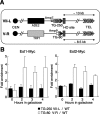
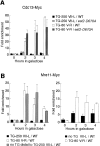

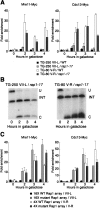

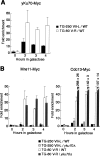
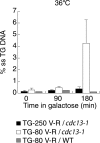
References
-
- Bertuch A.A., Lundblad V., Lundblad V. The maintenance and masking of chromosome termini. Curr. Opin. Cell Biol. 2006;18:247–253. - PubMed
-
- Bianchi A., Negrini S., Shore D., Negrini S., Shore D., Shore D. Delivery of yeast telomerase to a DNA break depends on the recruitment functions of Cdc13 and Est1. Mol. Cell. 2004;16:139–146. - PubMed
-
- Booth C., Griffith E., Brady G., Lydall D., Griffith E., Brady G., Lydall D., Brady G., Lydall D., Lydall D. Quantitative amplification of single-stranded DNA (QAOS) demonstrates that cdc13-1 mutants generate ssDNA in a telomere to centromere direction. Nucleic Acids Res. 2001;29:4414–4422. - PMC - PubMed
-
- Chan S.W., Blackburn E.H., Blackburn E.H. Telomerase and ATM/Tel1p protect telomeres from nonhomologous end joining. Mol. Cell. 2003;11:1379–1387. - PubMed
-
- D’Amours D., Jackson S.P., Jackson S.P. The Mre11 complex: At the crossroads of DNA repair and checkpoint signalling. Nat. Rev. Mol. Cell Biol. 2002;3:317–327. - PubMed
Publication types
MeSH terms
Substances
LinkOut - more resources
Full Text Sources
Molecular Biology Databases
Miscellaneous
